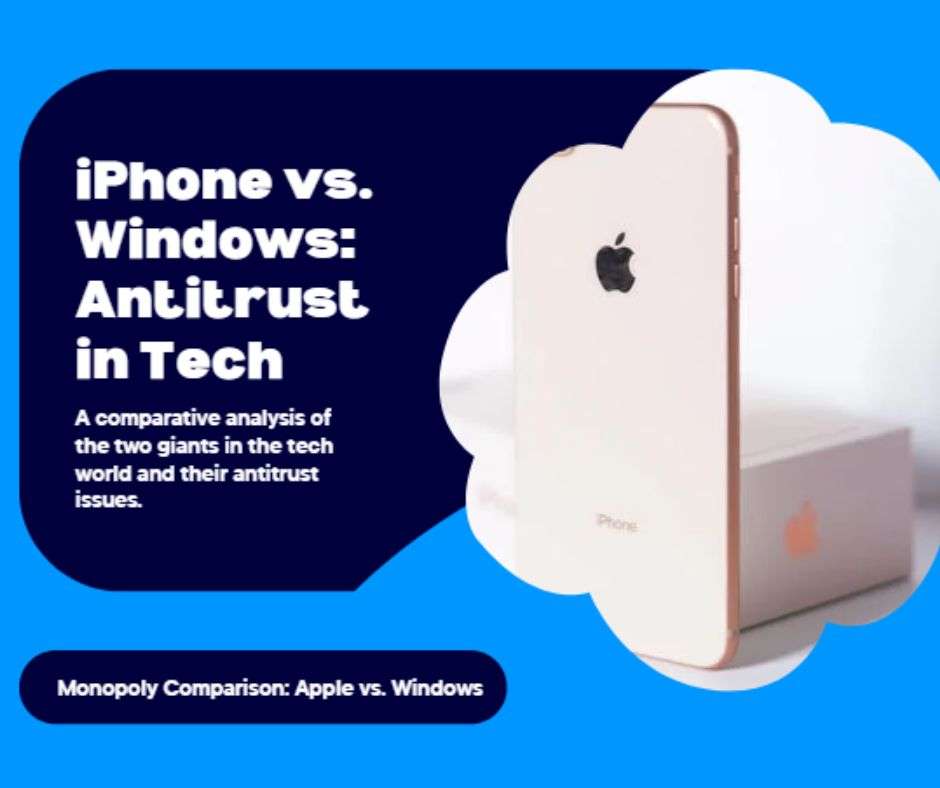Monopoly Comparison & Tech Antitrust : In the realm of tech giants, discussions around monopolies and antitrust regulations have always been at the forefront. Recently, the U.S. Department of Justice, along with attorneys general from multiple states, filed an antitrust lawsuit against Apple, alleging the tech company of holding a monopoly in the premium smartphone market. This lawsuit draws comparisons to the historic antitrust case against Microsoft in the 1990s. Let’s delve into the complexities of these situations and explore the nuances of market dominance and competition.

1. Understanding the Allegations | Monopoly Comparison & Tech Antitrust
The lawsuit against Apple revolves around the claim that the company wields significant monopoly power in the smartphone market, particularly in the premium segment. It asserts that Apple employs various tactics to maintain this monopoly status, hampering fair competition in the industry.
2. Comparing Apple’s Position with Microsoft’s Monopoly
Drawing parallels between Apple’s alleged monopoly and Microsoft’s historical dominance over personal computer operating systems, it’s crucial to note a fundamental distinction. While Microsoft’s monopoly in the operating system market was indisputable, Apple’s position in the smartphone realm is not as unequivocal.
3. Key Differences in Monopoly Assertions
Microsoft’s Windows operating system enjoyed over 90% market share in its prime, showcasing a level of dominance that Apple’s iPhone monopoly doesn’t quite replicate. This distinction underscores the importance of market power in antitrust cases, where the ability to stifle competition is a critical factor.
4. Addressing Tactics and Market Influence
The DOJ’s case against Apple highlights various tactics that allegedly contribute to maintaining its monopoly, such as limiting interoperability with non-Apple devices and creating barriers for users to switch platforms. These tactics aim to showcase how Apple’s market power affects consumer choice and competition in the smartphone industry.
5. Analyzing Antitrust Dynamics
Antitrust cases in the tech industry often revolve around the delicate balance between innovation, market dominance, and fair competition. The evolution of market forces and the impact of regulatory interventions shape the competitive landscape, paving the way for new players to challenge existing giants.
6. The Intersection of Technology and Regulation
As technology continues to reshape industries and consumer behaviors, regulatory scrutiny becomes essential to ensure a level playing field. Antitrust actions serve as a mechanism to maintain competition, foster innovation, and protect consumer interests in a rapidly evolving digital ecosystem.
7. Conclusion: Navigating the Paths of Competition
In the ever-changing landscape of tech monopolies and antitrust regulations, the cases of Apple and Microsoft offer valuable insights into the dynamics of market power and competitive behavior. Understanding these nuances is key to fostering innovation, promoting fair competition, and shaping a digital future that benefits both businesses and consumers.
we aim to shed light on the intricate details of tech monopolies, antitrust challenges, and the evolving regulatory landscapes that define the tech industry’s competitive dynamics. Stay tuned for more updates and analysis on the intersection of technology, business, and regulation.

